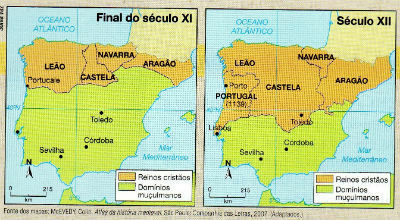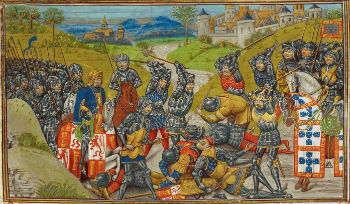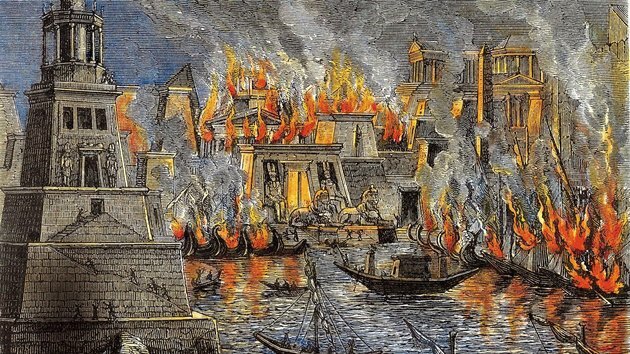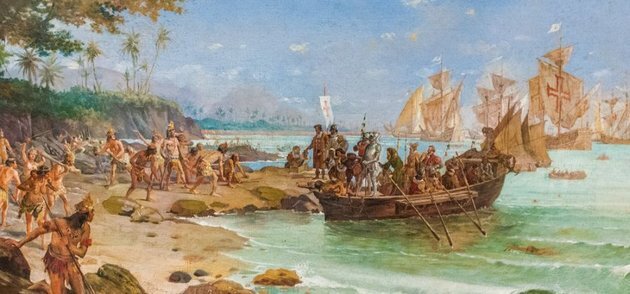THE Avis Revolution it was a political and military conflict that took place between 1383 and 1385 between the Kingdom of Portugal and the Kingdom of Castile.
Historical context
The formation of the Portuguese national state is related to the expulsion of the Moors in the Wars of Reconquest. These were aimed at expelling the Moors (Muslims) from the Iberian Peninsula.
The War of the Reconquest generated four new kingdoms: Leon, Castile, Navarre and Aragon (territories that now belong to Spain).

Learn more about Reconquest of the Iberian Peninsula.
The King of León, Alfonso VI, will count on the help of French nobles in the war against the Muslims and one of them will be Henry of Burgundy. At the end of the war, Henrique de Burgundy is rewarded with the territory of Condado Portucale (or Condado Portucalense) and also marries Afonso VI's daughter Teresa de Leão.
In this way, the Burgundy or Afonsina dynasty that will govern this region is founded.
The heir of this marriage, Afonso Henriques, proclaims the county's independence from the kingdom of Leon, through wars and the signing of the Treaty of Zamora.
In this way, in 1139, it is considered the year of birth of Portugal, although the south was still missing to be reconquered.
Therefore, in 1147, with the help of the Anglo-Saxon crusaders who were on their way to the Holy Land, Afonso Henriques conquered Lisbon, definitively expelling the Muslims from his territory. Later, in 1179, he will be confirmed king by Pope Alexander III.
The Burgundy dynasty will rule Portugal until the 14th century when the Avis Revolution takes place.
Avis Revolution - 1385
Background
With the death of Dom Fernando I, in 1383, the heir to the throne, Beatriz, was married to Don Juan I of Castile. The latter claimed for himself and his wife the crown of Portugal.
This created a problem, as some sectors of society did not want to lose their acquired independence. Thus, two factions arise:
- Nobility – supported the union with the kingdom of Castile.
- Bourgeoisie, gentry and “small ray” – did not want the union with the kingdom of Castile.
Thus, the latter will support the bastard brother of Dom Fernando I, João, known as the "Avis Master".
As was common in the Middle Ages, this impasse was resolved with a confrontation, the Battle of Aljubarrota.
Battle of Aljubarrota

Medieval illumination illustrating the Castilian army, on the left, and the Portuguese, on the right.
The Battle of Aljubarrota put on one side the forces of Dom João I – the Master of Avis – supported by the English. On the other, Don Juan I, King of Castile, with the help of the French.
Despite having a smaller number of soldiers than the Castilians, the Portuguese managed to win the battle due to tactical innovations and the command of Constable Nuno Álvares Pereira.
Once the dispute is over, Dom João I is recognized as sovereign of Portugal and the Algarves. Thus, a new dynasty, Avis, establishes itself on the throne.
Consequences of the Avis Revolution
The victory over the kingdom of Castile definitively established Portugal's independence from this kingdom, under the command of Dom João I.
The support of the commercial bourgeoisie was decisive, as it helped to provide the necessary financial resources for the maintenance of the Army.
After that, the other Portuguese kings gave ample support to the commercial expansion activities. The nobility also supported this process, as far from being harmed, they saw themselves benefiting from the acquisition of new lands.
Thus, with the centralized State, the nobles satisfied and the bourgeoisie supporting, Portugal began to expand its territory, not by land, but by sea. First to North Africa, then to the archipelagos and then in expeditions that would culminate in the arrival in America and Asia.
Know more:
- Formation of Portugal
- The First Great Navigations
- Portuguese Navigations



